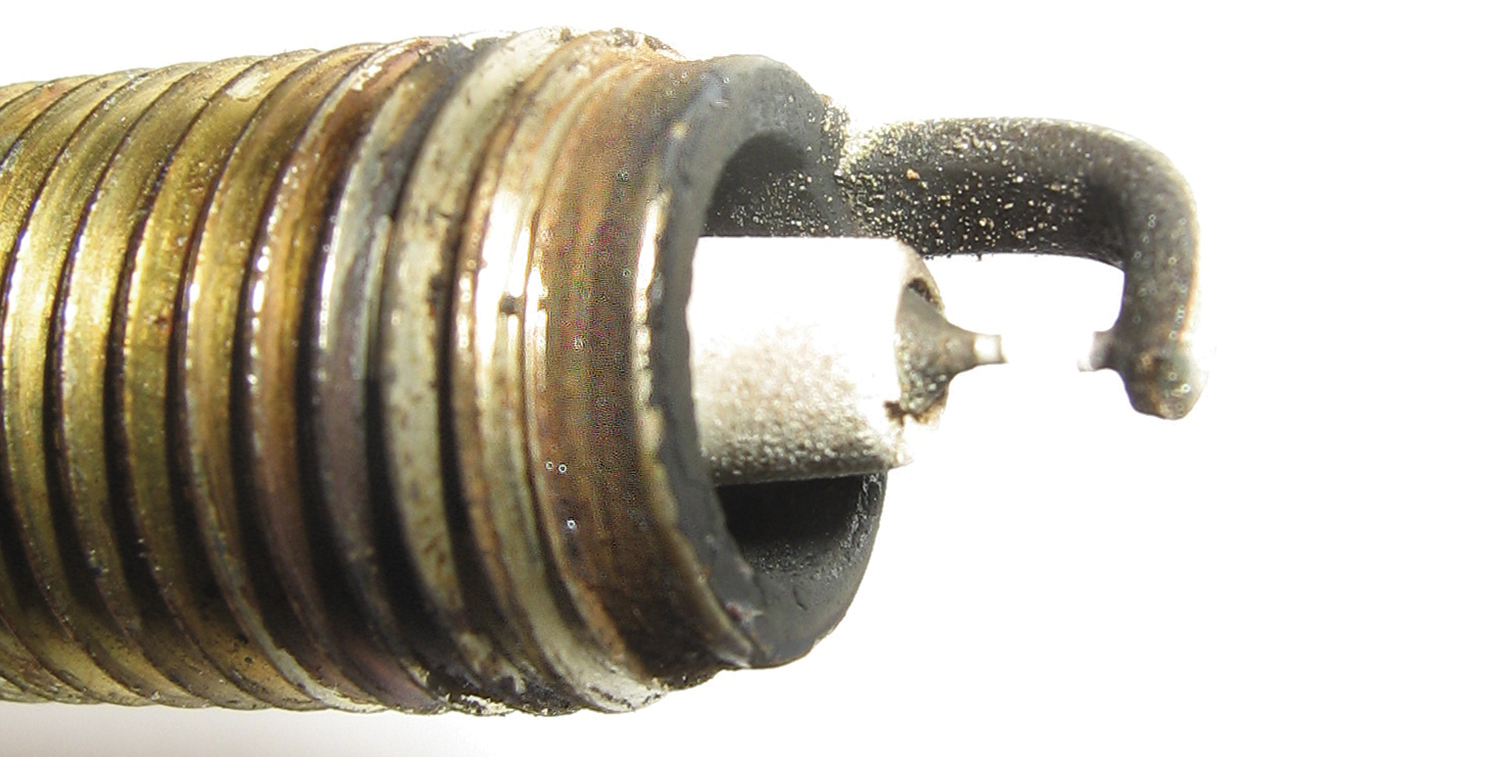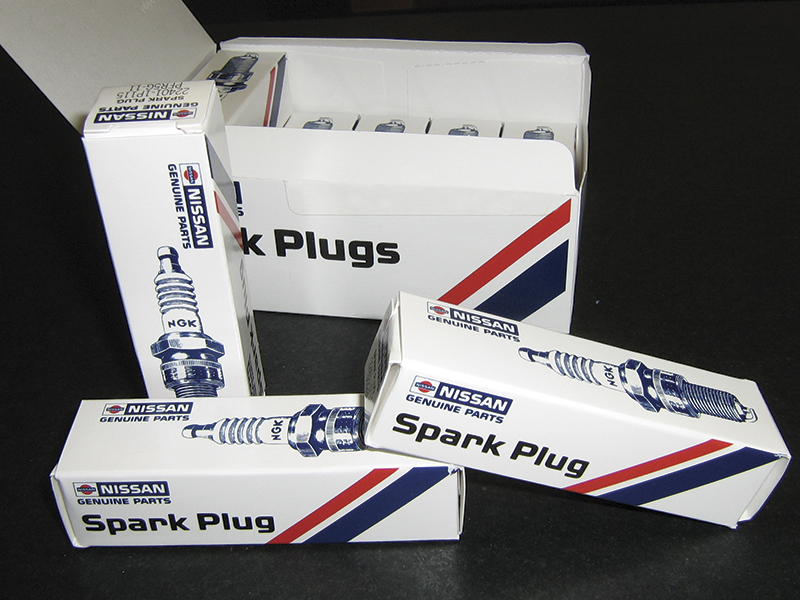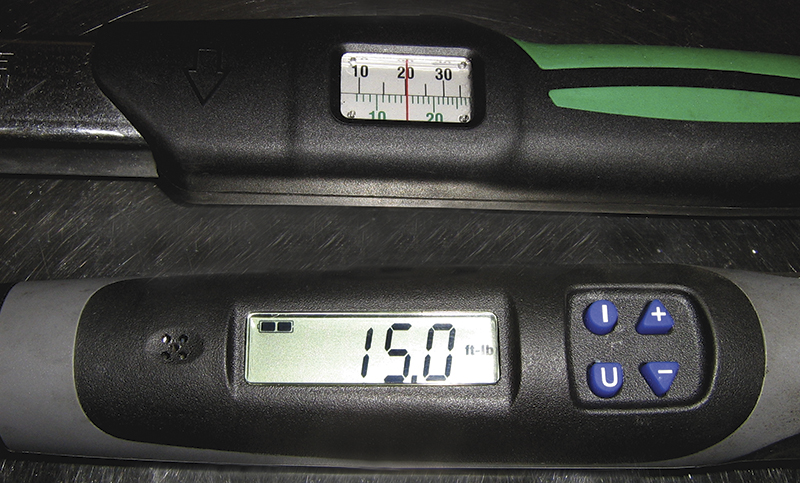Installing the incorrect spark plugs on your customer’s Nissan or Infiniti – or doing it improperly – can lead to big problems!
Not that many years ago, a technician might replace several sets of spark plugs per day. Conventional spark plugs had relatively short service intervals, and most major services included spark plug replacement. Ignition components were easy to access and technicians hustled through spark plug replacements quickly.
The replacement intervals on today’s Nissan and Infiniti cars are less frequent. Many Nissan and Infiniti vehicles will go 105,000 miles without needing spark plug replacement. Because these vehicles will only need the plugs replaced once or twice during their life, proper installation is more important than ever. The same installation error that might not have caused a symptom during a relatively short service life, may come back to bite you during the course of 105,000 miles.
Servicing secondary ignition is a job that deserves your best effort. It should not be approached with a “Look how fast I can do this job!” attitude, nor should it be cruised through on autopilot. Instead, perform an ignition service carefully and attentively. That way, you can be sure your work will go the distance. If all goes well, the spark plugs you install will be in service for a very long time. Just think: the technician who replaces them next may be attending 6th grade now.
Replacement intervals
Proper spark plug replacement intervals can be found on www.nissan-techinfo.com and www.infiniti-techinfo.com. Just use the “Find Publications” feature to locate the correct service manual. Then, open the “Maintenance” section and navigate to “Periodic Maintenance”. If you don’t have a subscription to Nissan’s tech info sites, you can also find periodic maintenance schedules on the Nissan owner’s site: www.nissanusa.com/owning.
There is no advantage to replacing spark plugs early. Unless the car is driven under unusual conditions (like racing), or the vehicle has been driven with other problems, such as detonation, excessive oil consumption, lack of fuel control, or misfire, the spark plugs should perform well through their entire service life. If plugs with a 105K replacement interval were replaced at 60K instead, there wouldn’t be a noticeable improvement in performance or fuel economy.
Make it a “tune-up”, not a “tune-down”
There are many plugs that will “fit” in your customer’s Nissan, but only one plug that is “right.” Nissan puts a lot of time into testing to find the very best plug for each application. If you choose a different spark plug, the best you can hope for is equal performance. No other spark plug will provide superior performance, and many spark plugs will decrease performance.
You may be able to purchase OEM spark plugs from other sources. However, you should consider buying directly from your Nissan or Infiniti dealer for the following reasons:
First, application errors are far less likely when plugs are ordered by VIN through a Nissan or Infiniti dealer, and correct application is very important.
Second, you can be sure you are getting the right type of NGK plug. For instance, the vehicle may call for iridium tip, but there may also be platinum tip listed in the NGK catalog. It might work, but the replacement interval would need to be changed.
Third, you’ll find prices for Genuine Nissan plugs from a dealer are about the same — and in many cases less — than NGK plugs from aftermarket vendors. Correct parts the first time, great prices, and a Genuine Nissan box to impress you customers: all good reasons to go with Genuine Nissan spark plugs.
Before you start
Let the engine cool before removing the spark plugs. Don’t start yanking spark plugs right after a test drive. There are two problems with removing spark plugs on a warm engine:
- Aluminum expands when warm. This will cause the spark plug hole to shrink, and the spark plug to bind.
- Aluminum becomes a little “gummy” when warm. This makes galling more likely if the plug is removed with a warm engine. Binding and an increased tendency to gall make damage to the spark plug hole threads far more likely if the plugs are removed from a warm engine.
Clean installation
After 105,000 miles of driving, a lot of debris will have accumulated in the engine compartment – road salt, sand, and all sorts of stuff that you wouldn’t want falling into the engine through an open spark plug hole.
A three stage cleaning process will help ensure a quality job:
- Use compressed air to clean the area around the top of the coils before removing them.
- Next, use compressed air to clean the inside of the tubes. Be sure to wear eye and ear protection while using compressed air.
- After the plugs are removed, use a long industrial swab to clean the sealing surface. This final step will remove any debris that might get caught between the head and the plug and cause a false torque reading during installation.
Cleaning spark plug hole threads is usually not necessary on Nissan products, even after a plug has been sitting in a head for 105,000 miles. However, if the new spark plug does not thread easily into the head by hand, the threads should be cleaned. Thread friction will decrease the clamping force at a given torque value, so even though the plug has been tightened to the specified torque, it’s not really tight against the head.
When cleaning spark plug hole threads, a thread chaser should be used rather than a tap. A tap may remove aluminum, weakening the threads. It’s also more likely you’ll accidentally cross-thread when using a tap. If the thread chaser has a longer reach than the spark plug, care should be used to avoid allowing the chaser to protrude into the combustion chamber. On some engines it’s possible to hit an open valve with the chaser, depending on the engine’s position in its cycle.
The importance of torque
When installing spark plugs, proper torque is critical. A plug that is too loose will cause poor heat transfer between the plug and the cylinder head. This can cause the plug to overheat and glow red hot. The glowing electrode can cause the air fuel mixture to ignite long before it should. This is called pre-ignition. Pre-ignition, unlike detonation, is a silent engine killer. A hole in the piston may be the first sign of trouble. If a loose plug does not cause pre-ignition, it may end up loosening and popping out. Either way, a loose plug is bad news.
An over-tightened spark plug is also bad. Over-tightening can cause distortion and leakage through the gas seals (located between the metal case and the insulator), cracks in the insulator, and cylinder head damage.
Leaking gas seals will leave dark brown staining at the base of the insulator near the metal case. If the gas seals are damaged, combustion gasses can leak past the insulator and “cook” the coil boot, leading to poor sealing and a misfire. It will also cause a loss of efficiency.
Excessive torque can also crack the insulator, causing a spark leak and misfire. It may be hard to see the crack, depending on the location.
Finally, over-tightening a spark plug can weaken or ruin the spark plug threads in the cylinder head. Cylinder head damage can be very expensive to repair.
For Nissan spark plugs with 14mm threads, the torque specifications are usually around 14 – 22 ft. lbs. Some 3/8” drive torque wrenches are not very accurate in this range, so check the specifications on your wrench before relying on it. An inch-pound wrench can also be used; just multiply the foot-pound specification by 12 to find the inch-pound equivalent. You can find the torque specification at www.nissan-techinfo.com or www.infiniti-techinfo.com in the maintenance section of the service manual for the specific vehicle you are servicing.
Power tools should never be used to install spark plugs. An air ratchet is a time-saving tool, but don’t use it to install spark plugs. It takes about 30 seconds to thread a spark plug in by hand then tighten it with a torque wrench. Spending an extra 2 – 4 minutes on work that will need to last 105,000 miles is not too much to ask.
Handle with care
Spark plugs are easily damaged. If you drop a plug, even from waist height, it may break. Sometimes the damage is obvious, like a bent ground electrode or broken porcelain. Sometimes the damage is a little less noticeable, like a tiny crack in the insulator. When in doubt, install a new plug.
Gapping
The instructions for spark plug gapping are simple – don’t do it. Nissan spark plugs come set to the proper gap. There is no need to check or adjust the gap between replacement intervals.
Cleaning
It’s rare to see a fouled plug these days. Modern fuel control is a wonderful thing! However, plugs can still foul if the car develops a problem, such as extended cranking with no spark. Nissan does allow for cleaning spark plugs, just not with a wire brush. Cleaning and drying with acetone or brake cleaner, followed by blasting with a spark plug cleaner is the preferred method if the plug is to be cleaned, rather than replaced. However, extreme care should be used to remove all abrasive media before reinstalling the spark plug, and blast time should not exceed
20 seconds.
Coil inspection
When the coils are removed, they should be inspected. The coil boot should be soft and malleable. Check the inside of the coil boot with a bright flashlight. Make sure there is no corrosion on the contact point or spring, and look for carbon tracking. Also check the primary connectors for corrosion and proper fit.
Dielectric grease
Dielectric grease should be applied to the coil boots. Dielectric grease is silicone grease that offers several benefits. It helps seal the coil boot to the spark plug. This will prevent moisture intrusion and reduce the chance of arcing and misfire, especially on rainy and foggy days. Finally, it will lubricate the boot, making the coil easier to remove without damage.
Stuck plugs
Frozen plugs are not very common on Nissan products, even when the car comes in late for service. However, you may occasionally run into a vehicle with a frozen plug that doesn’t want to budge. To remove a stuck plug, fill the bottom of the spark tube with penetrating oil. Let it sit for a while, and then crank the plug a quarter turn, followed by more sitting and soaking. Next, try to remove the plug. If it’s still tight, you may need to work the plug back and forth as you remove it.
The rewards of doing it right
All this might seem like a lot of work for a job that used to be simple and more casual. But, once you’ve added cleaning, dielectric grease, and using a torque wrench into your routine, you’ll find it really doesn’t take much time at all. And, you can be proud of the work you’ve done. What’s more, nine years from now you can tell the new apprentice you put those plugs in when he was in 6th grade, without worrying about him cursing you.









0 Comments